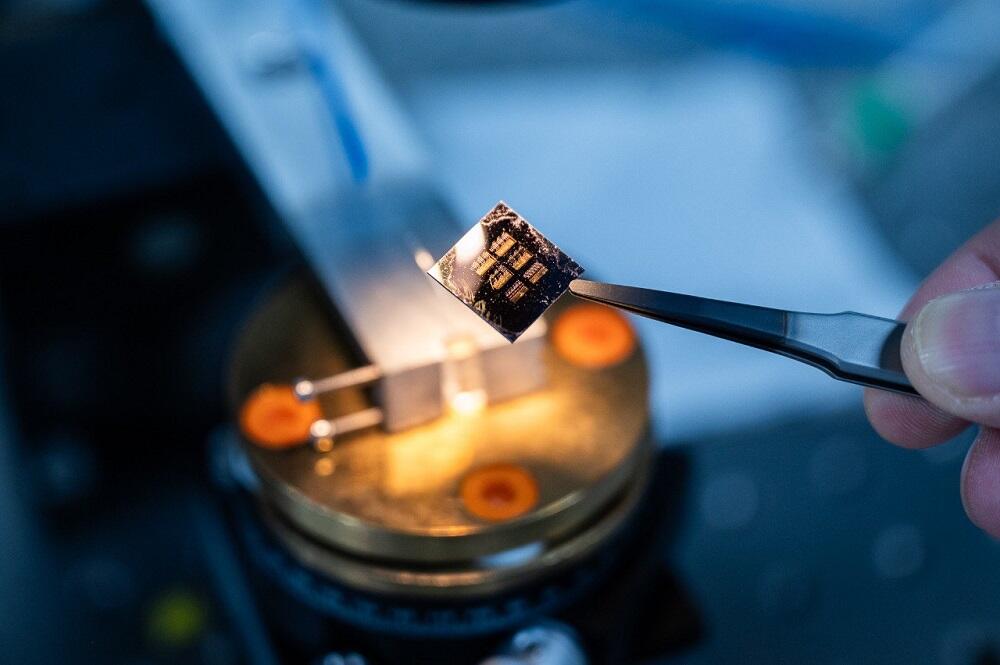Scientists from the National University of Science and Technology MISIS together with colleagues from Germany and Sweden achieved a result that seemed impossible. The researchers managed to create at ultra-high pressures a new material that preserves the structure and properties even under normal atmospheric pressure. Moreover, it turned out that it can be recreated in more “trivial” laboratory conditions via complex chemical reactions. The results of the experiment alongside with their theoretical explanation are presented in Nature Communications.
For several years, an international team of scientists from NUST MISIS, the University of Bayreuth (Germany) and the University of Linköping (Sweden) has been working on the search for novel superhard modifications of transition metals carbides and nitrides at ultrahigh pressures. Such metals have high hardness and high melting point, so they are used in the production of heat-resistant alloys, cutting tools, high temperature sensors, acid-and alkali-resistant protective coatings. The creation of more advanced superhard modifications will bring the use of such materials to a fundamentally new level.
Earlier experiments have proven the ability to create modifications of transition metals nitrides that are “impossible” for Earth conditions, but these modifications “disintegrated” when the pressure decreased. The next metal exposed to ultrahigh pressure was rhenium. This turned out to be a breakthrough: the material modified at such pressure has preserved its new structure and properties at conventional “room” conditions.
To a certain extent, the complexity of such a research can be compared to a golf play, where the hole is located on a steep hill, and one needs not only to throw the ball, but also to hold it inside.
During the experiment, rhenium and nitrogen were placed in the diamond anvil. Then the anvil was compressed simultaneously with the laser heating over 2000 Kelvin (>1700 °C). As a result, at pressures from 40 to 90 GPa (from 400 to 900 thousand Earth’s atmospheres), a special monocrystalline structure was obtained, i.e. rhenium pernitride and two nitrogen atoms (rhenium nitride pernitride).
“Rhenium is almost incompressible as such, as its bulk modulus is about 400 GPa. After the modification, it increased to 428 GPa. To compare with, the bulk modulus of diamond is 441 GPa. Moreover, thanks to nitrogen components, the hardness of rhenium pernitride increased 4 times, to 37 GPa. Normally, materials obtained at ultrahigh pressures cannot preserve their properties after extraction from the diamond anvil, but this time our colleagues were pleasantly surprised. Of course, this result required explanation, so we modeled the process on our supercomputer. The theoretical results confirmed the experimental data and allowed to explain both the unusual properties of the new material and the possibility of its synthesis not only ta extreme, but also at Earth’s conditions”, Igor Abrikosov, Professor, scientific advisor of Materials Modeling and Development laboratory at NUST “MISIS”, Head of Theoretical Physics Division at the Department of Physics, Chemistry and Biology, Linköping University, explains.
Indeed, it is important to understand that the diamond anvil can be used only for experiments, as it is very small, complex and expensive. That is why scientists decided to develop a technology that would allow recreating this new modification in more “trivial” conditions. Having understood the processes occurring in the material at ultra-high pressures, scientists were able to calculate and conduct a chemical reaction with ammonium azide in a large-volume press at 33 GPa. Now that the existence of such a modification is proved theoretically and experimentally, other ways to obtain it can be tested, for example, deposition of thin films.
Previously, scientists have already proved that one can create “forbidden” modifications of beryllium oxide, silica and a number of nitrides, as well as to transform insulating hematite into a conductor. All this happened at pressures hundreds of thousands (and sometimes millions) times higher than atmospheric one.


